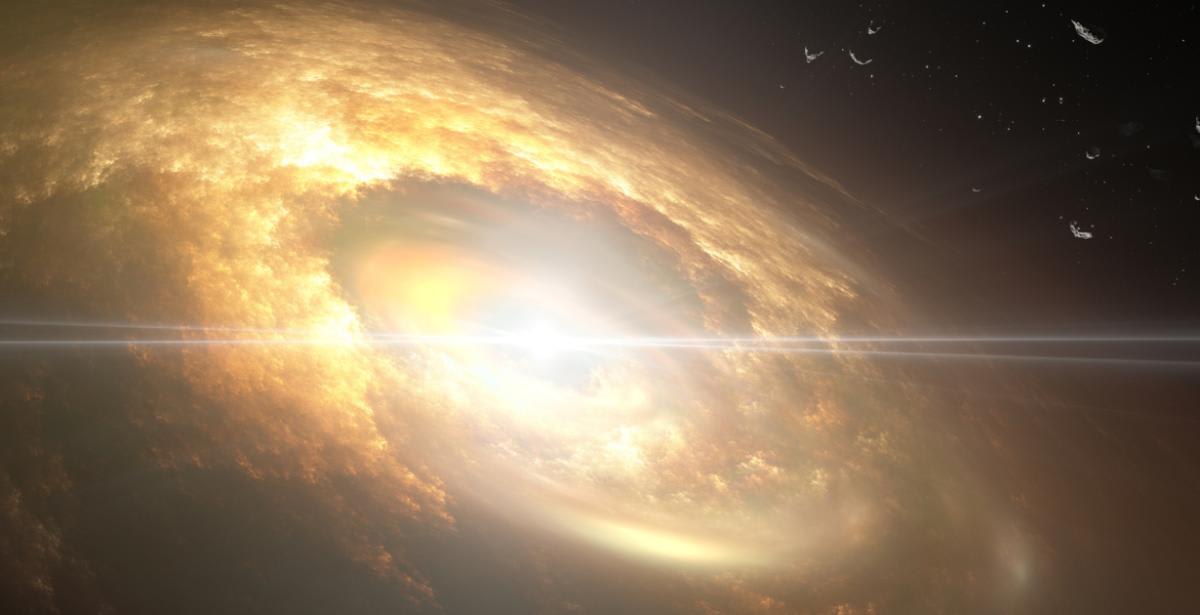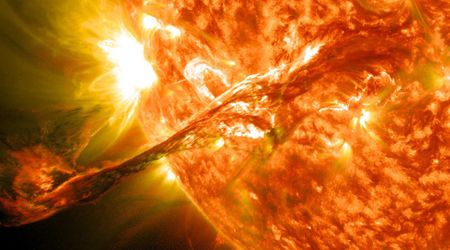Our solar system is moving over 3 times faster than we thought—astronomers just figured out why

A new study reveals something that may directly challenge our current understanding of how this universe works. According to research published in the Physical Review Letters, led by astrophysicist Lukas Böhme of Bielefeld University, the solar system is moving faster through the universe. The report suggests that the speed of current motion is higher than what was predicted by previous studies by a wide margin.

“Our analysis shows that the solar system is moving more than three times faster than current models predict," said Böhme, per Phys.org. "This result clearly contradicts expectations based on standard cosmology and forces us to reconsider our previous assumptions.” The team began the research by examining radio galaxies—distant galaxies that emit radio waves, just like radio signals. Radio waves’ ability to cut through dust and gas allows astronomers to map populations of galaxies, whereas radio telescopes can spot galaxies invisible to optical instruments. The movement of the solar system across the universe creates a "headwind," leading to the appearance of slightly more galaxies in the direction of travel. But since the difference is very small, detecting it requires very precise measurements.

The researchers drew on data from LOFAR, the Low Frequency Array telescope that links radio antennas across Europe, and combined it with findings from two other major radio observatories. Thanks to that, they were able to establish a precise count of such radio galaxies for the first time. The statistical method that they made use of was new—one that was cognizant of the fact that many galaxies have complex structures comprising multiple components. And while this careful counting resulted in larger (yet more realistic) measurement uncertainties, the researchers found a deviation of more than five sigma, which suggests a very low probability that the result is a statistical fluke.
![Maps (first and third row) and histograms (second and fourth row) of source counts from six radio continuum surveys and their best-fit Poisson and negative binomial distributions. [Image Credit: Physical Review Letters (2025). DOI: 10.1103/6z32-3zf4]](https://de40cj7fpezr7.cloudfront.net/c7e84a32-3a35-43fe-b840-57146e1d6586.png)
What the researchers found was an anisotropy (dipole) that is 3.7x larger than the expectations of the standard cosmological model, which assumes matter is more or less uniformly spread. "If our solar system is indeed moving this fast, we need to question fundamental assumptions about the large-scale structure of the universe," shares Professor Dominik J. Schwarz, a cosmologist at Bielefeld University and co-author of the study. Schwarz highlights a possibility that is no less significant. “Alternatively, the distribution of radio galaxies itself may be less uniform than we have believed. In either case, our current models are being put to the test.”

The new results also throw a light on earlier observations. In previous studies of quasars, the extremely bright centers of distant galaxies where supermassive black holes eat up matter and release vast amounts of energy, researchers noticed the same imbalance. The difference is that those observations came from infrared data rather than radio waves in this recent one. Yet they showed that it is not an error but more likely the way the universe functions.

With technological advancements and better research tools, astronomers continue to reveal new things and features of the world. This latest finding is an obvious example that even the vast-scale motions of our solar system are yet to be understood.
![An artist's impression of Kuiper Belt Object, located on the outer rim of our solar system (Representative Image Source: NASA | ESA | G. Bacon [STScI])](https://de40cj7fpezr7.cloudfront.net/c49cfc33-04ea-4be9-8ce1-cd11aa9d7880.png)
With all these findings, it becomes even more crucial to realise the scale we are talking about when it comes to the movement of our solar system. This system is circling the galaxy’s center at about 515,000 mph (828,000 kph), per NASA. And it is not just limited to 8 planets and the Sun. It goes far beyond, even past Neptune, where you can find the Kuiper Belt. It is a wide ring of icy bodies, even smaller than Pluto. This is just a quick reminder of how vast the solar system is, now that we are talking about its movement through the universe.
More on Starlust
First-ever direct glimpse captures earliest moments of a new solar system formation









